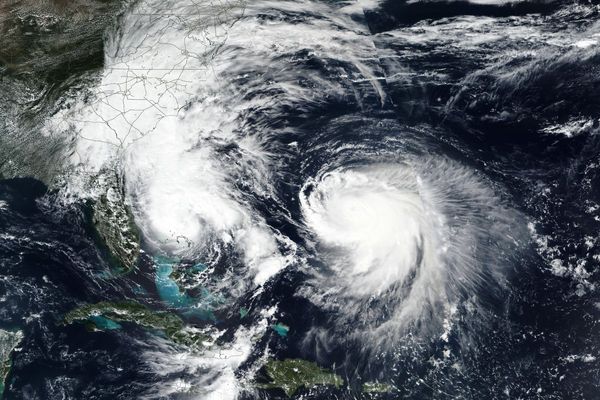The biggest unknown about Friday's jobs report isn't whether the unemployment rate will rise or fall. It's whether the Labor Department will actually deliver a jobs report on Friday. The odds aren't looking great, with a 68% chance of a government shutdown when the new fiscal year begins on Oct. 1, according to the Polymarket prediction market.
A government shutdown could deprive the Federal Reserve of key data on job growth and inflation at a time as it considers whether to cut interest rates again at the end of the month.
Government Shutdown Would Delay Jobs Report
During the most recent extended government shutdown, which dragged on from Dec. 22, 2018, to Jan. 25, 2019, both the jobs report and the consumer price index came out on time. But this time would likely be different, wrote Deutsche Bank senior U.S. economist Brett Ryan. That's because Congress had passed five of 12 appropriations bills before that shutdown, including a bill funding the Department of Labor.
A shutdown this week, Ryan says, would look more like the 2013 shutdown that started on Oct. 1 and ran for 16 days. As was the case in 2013, Bureau of Labor Statistics employees will likely be furloughed, potentially delaying both the monthly employment report and the consumer price index, unless the shutdown is quickly resolved.
Economic Impact Of A Shutdown
Given that no appropriations bills have passed, a shutdown would likely sideline all nonessential federal employees. Deutsche Bank estimates that a full government shutdown will put 800,000 federal employees on furlough, similar to the first week of 2013 shutdown. On top of that, Moody's Analytics estimated that 1.2 million essential federal workers went without pay until that shutdown ended and "a couple of hundred thousand private sector employees, many at defense contractors, could not work" and were unlikely to receive back pay.
Deutsche Bank estimates that each week a shutdown continues will slice two-tenths of a percentage point off of quarterly GDP.
Typically, any economic damage from a shutdown is fleeting, since both furloughed and essential workers end up receiving the same pay they would have gotten without a shutdown. However, there's some risk that the effects could linger this time, if the Trump administration makes good on its threat to turn a shutdown into a cause for further shrinking the federal workforce in areas outside the president's priorities.
Deutsche Bank's Ryan notes that 110,000 federal workers who have taken buyout packages were already expected to come off the federal payroll at the end of September. Deeper government job cuts would come at a time that payroll growth has slowed to a crawl and the unemployment rate, though still low, is at its highest level since late 2021.
S&P 500 History During Shutdowns
Because there's been a negligible lasting impact on the economy from government shutdowns, the S&P 500 has tended to weather them with little angst. An Edward Jones analysis finds that the S&P 500 average return during government shutdowns back to 1976 is 0%. During the longest shutdown in late 2018 and early 2019, the S&P 500 actually rose 10%. However, a dovish about-face from the Federal Reserve drove that rally, after the Fed's outlook for further tightening had sent stocks tumbling just before the shutdown.
A government shutdown now would come as the Fed is already cutting interest rates, Chairman Jerome Powell has signaled that further cuts will depend on the data. If there is no payroll and inflation data, that might give the Fed some pause. However, markets are currently pricing in 89% odds of a Fed rate cut on Oct. 29.
The Fed won't have to go completely without data. Payroll processor ADP plans to release its monthly estimate of private-sector job growth on Wednesday at 8:15 a.m. ET. That report doesn't have a great track record but has recently showed a marked slowdown in job gains. Deutsche Bank notes that weekly jobless claims data are expected to be released during a government shutdown as in 2013, since they're compiled at the state level.
What Happens Next?
House Republicans approved a straightforward seven-week funding extension, but that couldn't clear the Senate's 60-vote threshold to get an up-or-down vote. Senate Democrats unsuccessfully pushed an alternative that would continue to fund expanded subsidies for purchasing Affordable Care Act coverage at a 10-year cost of $350 billion, while unwinding about $250 billion in health care spending cuts in the One Big Beautiful Bill Act.
It remains to be seen whether Democrats will force a shutdown. However, if they do, Republicans could change Senate rules to override the 60-vote filibuster and pass a short-term funding extension.







